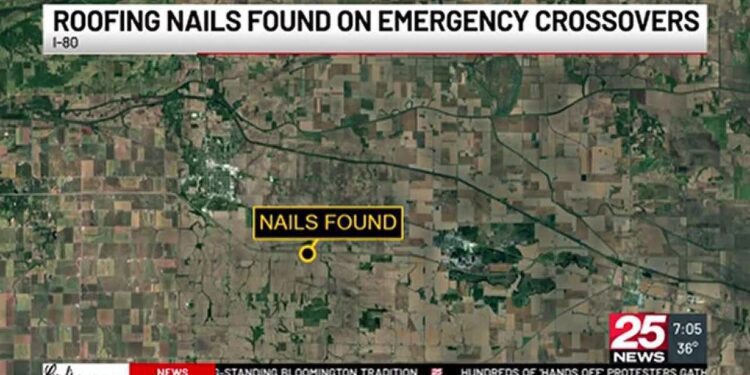The Mysterious Appearance of Roofing Nails on Highways
It’s a common occurrence: you’re driving along a highway and suddenly hear the unmistakable sound of a nail puncturing your tire. But how do roofing nails end up on highways, and who is responsible for this potentially dangerous situation?
Causes of Roofing Nails on Highways
Poor Load Securement
One of the most common reasons roofing nails find their way onto roads is improper load securement. When roofing materials, including nails, are not adequately secured in transport vehicles, they can easily fall onto the road, creating hazards for other drivers. Contractors and delivery drivers must ensure that all materials are tightly secured to prevent spillage.
Accidental Spills from Vehicles
Accidental spills are also a frequent culprit. For example, a container holding nails might accidentally tip over during transportation or at a construction site near a highway, scattering nails across the pavement. Regular checks and reinforced containers can help mitigate this.
Construction and Renovation Projects
Proximity to construction and renovation sites often leads to nails on roadways. As materials are transported to and from sites near highways, nails can inadvertently end up on the roads if loads are not handled correctly. Workers and companies need to regularly inspect their transport methods.
Risks and Implications
Tire Damage
Encountering roofing nails can lead to severe tire punctures, leaving motorists stranded and with a costly repair bill. It can also pose significant safety risks, especially on high-speed roads where losing control due to a flat tire can result in accidents.
Road Safety Hazard
Besides tire damage, roofing nails can cause accidents as drivers attempt to avoid debris. Swerving at high speeds is dangerous, and a split-second decision can trigger a traffic incident.
Solutions and Preventive Measures
Providing Proper Training
Transportation and construction companies need to provide adequate training to employees about secure load techniques. By ensuring everyone involved understands the importance of securing materials, the potential for spills can be reduced.
Regular Vehicle Inspections
Conducting regular inspections on vehicles transporting roofing materials is crucial. Inspectors should check for loose materials and ensure that equipment used to hold cargo is functioning properly.
Community and Government Initiatives
Community awareness campaigns and government regulations can help curb the issue. Implementing stricter penalties for unsecured loads and launching education initiatives can remind transportation workers of their responsibilities. Additionally, quick response teams should be established to clear any nails or debris that pose a risk.
Stay Safe on the Roads
While encountering roofing nails on highways can be a nuisance, understanding the causes and potential solutions can help reduce these occurrences. Motorists need to remain vigilant, and industries need to adhere to best practices in material handling to protect drivers and maintain road safety.
























